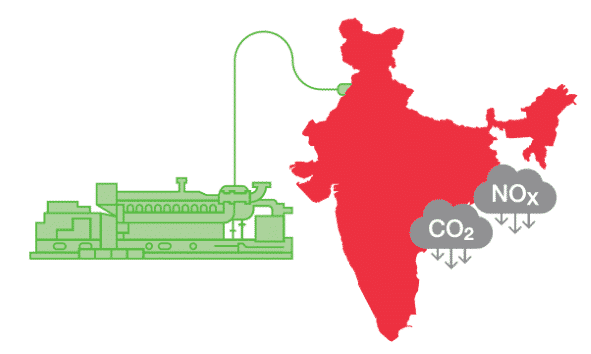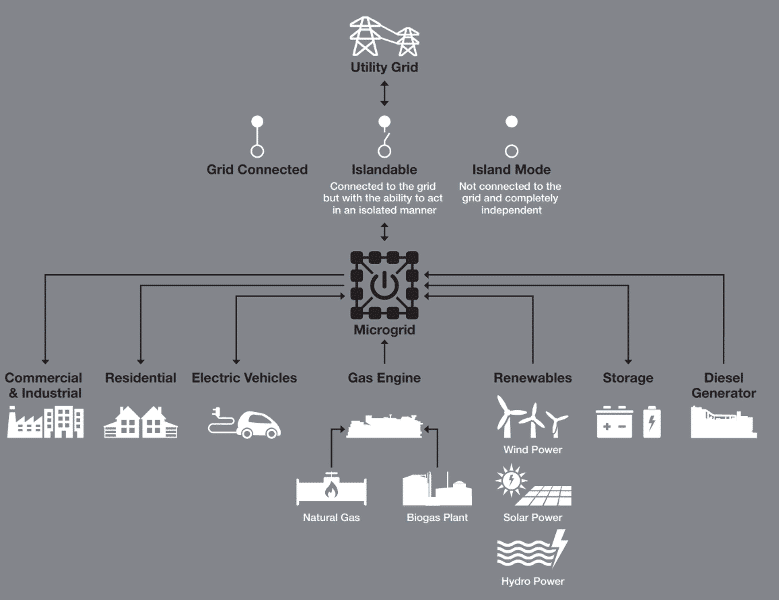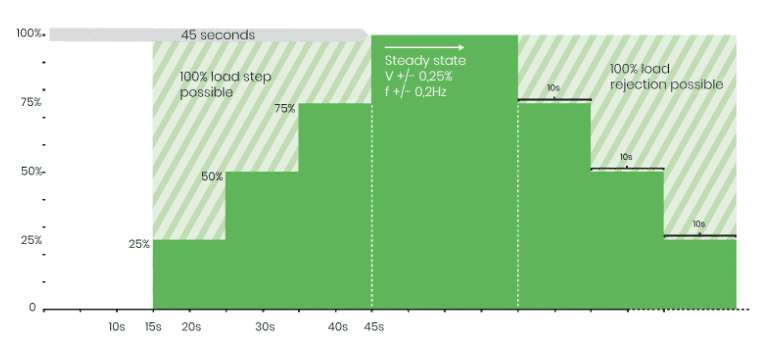Standby gas engines are a useful alternative to diesel-based gensets for the delivery of reliable back up power as well as typical continuous power. Standby gas engines can be fueled with a variety of fuels including renewable gases, pipeline gas or compressed and liquefied gases. They are a proven solution for the reduction in NOx and carbon emissions.
Reliable back up power
Gas engines therefore offer the potential of the highest levels of resilience whilst in parallel offering a low carbon or renewable solution for back-up power. In addition, standby gas engines are also a flexible asset that can be used to support the national electricity grid as peaking stations when not being used to support the immediate facility.

Benefits and features of standby gas engines
Emissions reduction
- Jenbacher gas engines are a proven technology as a primary source of power generation
- Gas fueled engines can deliver an 80-90% reduction in NOX
- If fueled by renewable gases such as biogas, biomethane, compressed biomethane or hydrogen the power source can be carbon neutral
- If fueled by natural gas a 25% reduction in CO2 can be achieved compared to diesel fuel
- No SO2 emissions (*unless using unrefined biogas containing sulfur)
- Significantly lower particulate matter (PM) emissions
Resilience
- Fast start-up capability that delivers load within 15 second and full capacity in under 45 seconds
- Gas fueled generators provide critical reliability and are less likely than diesel generators to fail during a power outage
- When redundant grid-parallel gas engines can operate as peaking stations, enabling their operators to provide electricity to support the national electricity grid
- Jenbacher technology can support 99.999% availability for data centers

| Emergency backup power supply | Island mode with grid parallel option | Grid parallel |
| Reliable backup power with proven technology | Cost savings due to lower grid connecting power | Fast-start resource providing balancing and ancillary services to the grid |
| Reduced CO2 and NOx emissions for longer run times | Avoidance of demand charges or coincident peak charges for electricity | Grid value – accommodating intermittent renewable generation |
| Unlimited stable fuel supply even in emergency situations | Easily expandable due to grid independence | Demand response – when need |
| Participation in curtailable tariffs and/or as an emergency standby | Peak shaving – with the ability to sell electricity when prices or high or to capacity markets |
Fast start-up capability
Typically, gas engine technology has been optimized for continuous operation at high efficiency. However, faster response times have become a priority due to recent changes in the energy landscape, such as the expansion of renewable electricity.
With technical improvements, including port injection and an advanced control management system, INNIO’s Jenbacher J620 natural-gas fueled generator can provide full output within less than 45 seconds whilst supporting up to a single 100% load step.
| Start-up steps | Fast start-up with the Jenbacher J620 generator for data centers |
| Conditions | Pre-heated and pre-lubricated |
| Start command, delay and pre-lubrication | 5 seconds |
| Firing to nominal speed | 10 seconds |
| Nominal speed to full load | 30 seconds |
| Start to full power | 45 seconds |
Load ramp /steps
With a pre-heated Jenbacher J620 fast-start, natural gas solution, either load steps or ramps can be applied immediately after reaching nominal speed. Typical load steps during an engine startup take place at 25% intervals with corresponding limits for voltage, frequency and settling times. The J620 fast-start solution also supports up to 100% load changes without trip and without corresponding limits for voltage frequency and settling time.
INNIO’s Jenbacher gas engine black start profile



